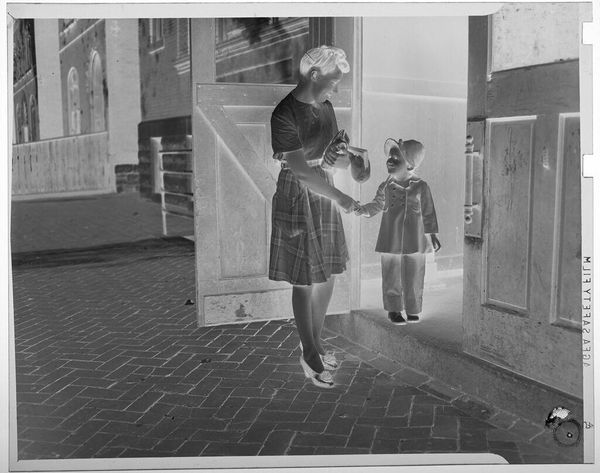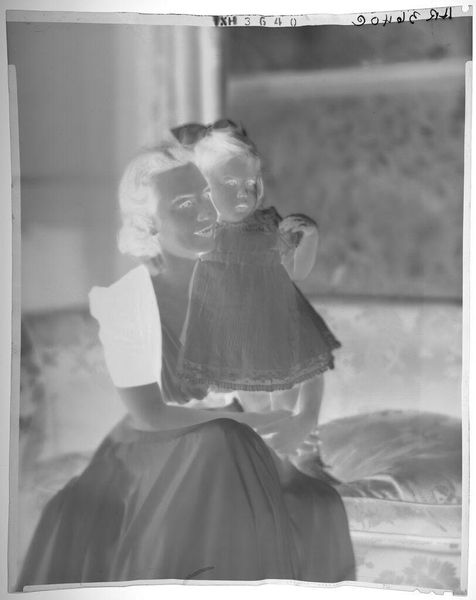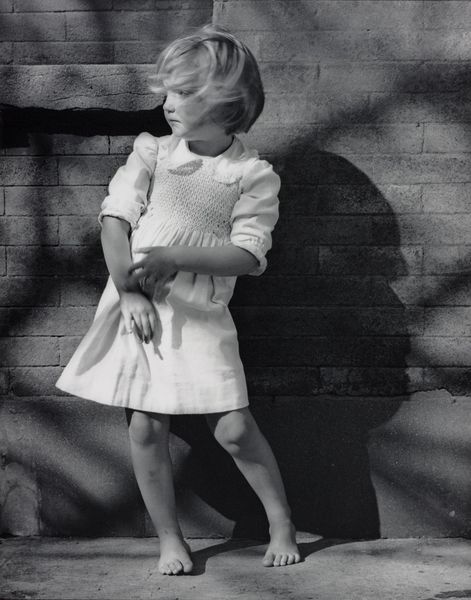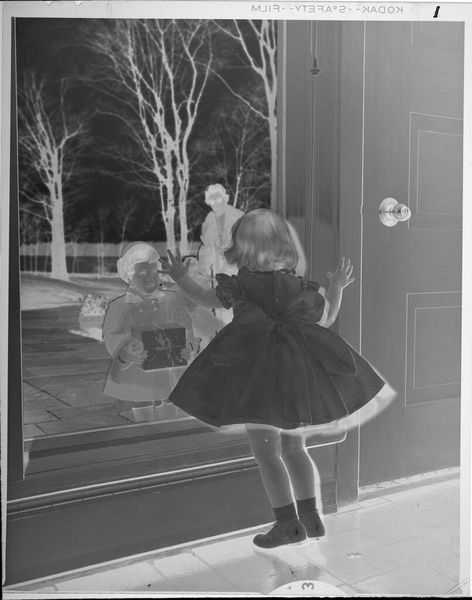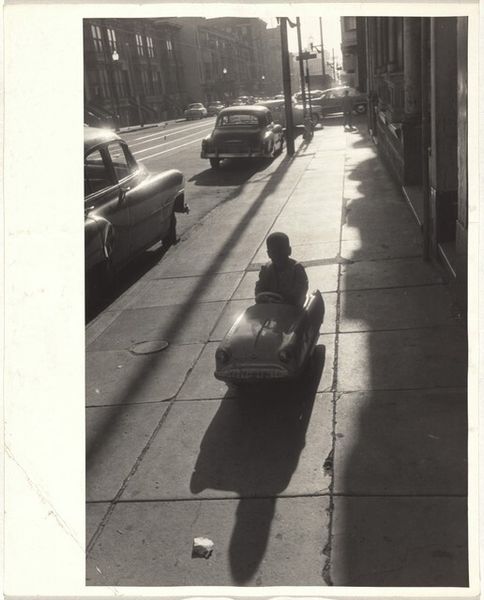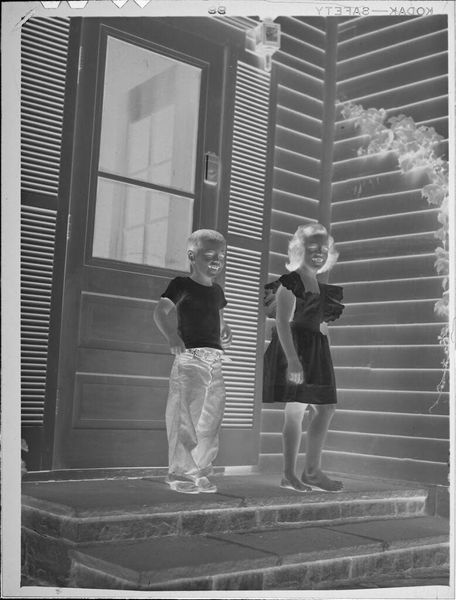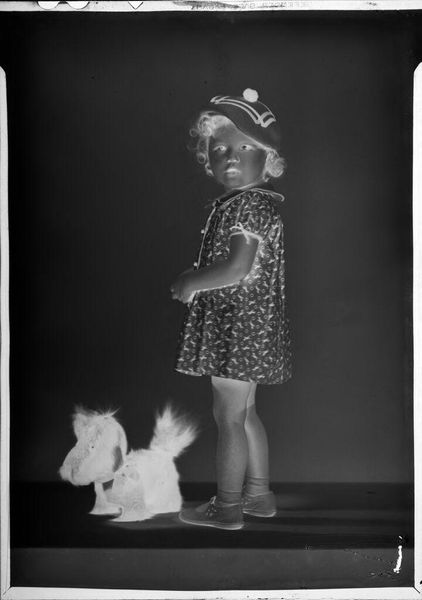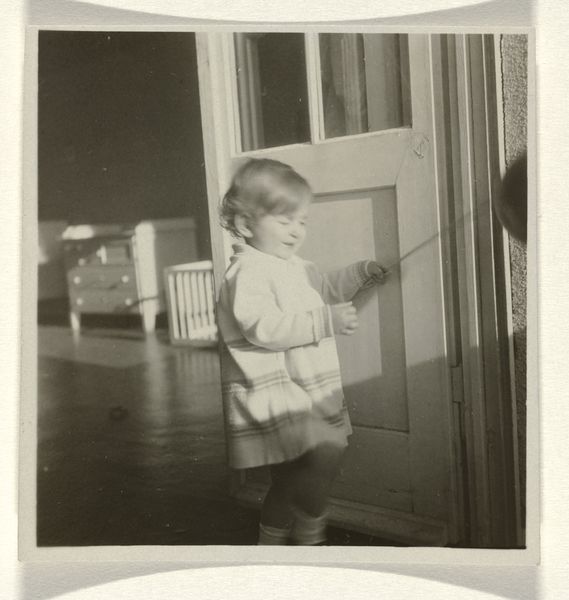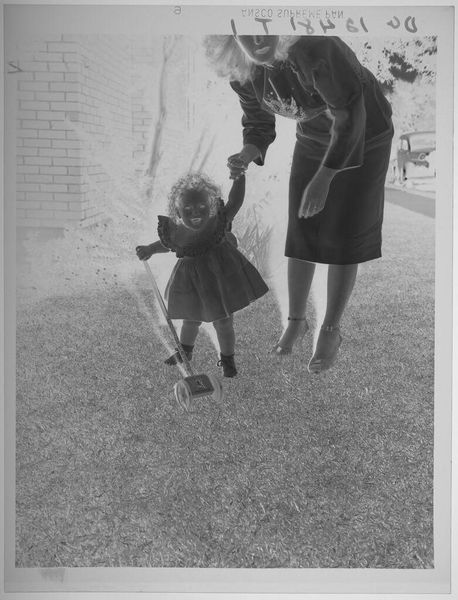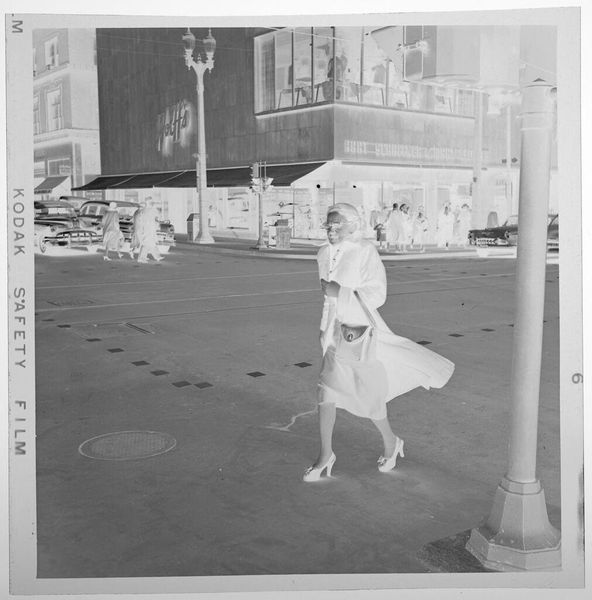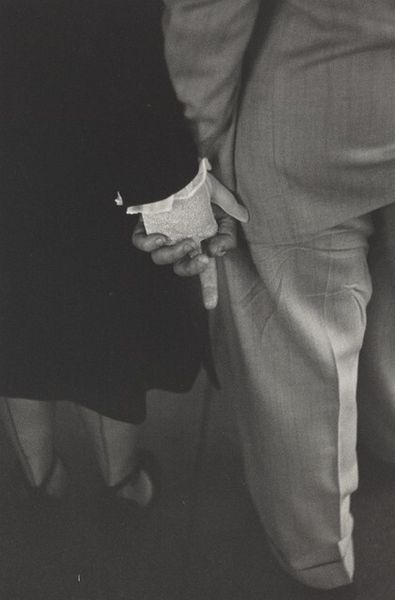
photography, gelatin-silver-print
#
portrait
#
contemporary
#
street-photography
#
photography
#
gelatin-silver-print
#
realism
Dimensions: image: 17.7 × 17 cm (6 15/16 × 6 11/16 in.) sheet: 30.6 × 22.6 cm (12 1/16 × 8 7/8 in.)
Copyright: National Gallery of Art: CC0 1.0
Curator: Before us, we have Robert Adams' photograph "Denver," created in 1981. It’s a gelatin silver print, characteristic of Adams’ straightforward, documentary style. What's your immediate take? Editor: There's a disquieting stillness. The little girl in her lacy dress holding what looks like a disposable cup amidst a banal street scene... it's an odd visual juxtaposition. The stark light emphasizes the severity. Curator: Adams was deeply interested in the relationship between people and the transformed landscape of the American West. It's crucial to recognize that his images are products of late-stage capitalist sprawl and environmental exploitation. Look closely at the edges. What do you see? Editor: Car culture dominates in the background and it appears that the entire photograph exists on the hard plane of the sidewalk—there's no soft earth here. The harsh light and sharp shadows, combined with the grainy texture, are compelling formal choices. Semiotically, the disposable cup stands out – it is a ready made discarded emblem of consumerism thrust into an image of an innocent young girl. Curator: Exactly. Adams is drawing attention to the ubiquity of this manufactured landscape and its effects on future generations. The gelatin silver print, mass-produced itself, reflects a society entrenched in similar industrial processes. Think about labor conditions, the resources extracted—the chain of production extending beyond the frame. Editor: I'm struck, too, by how Adams uses light to create depth. The way the sunlight casts shadows that nearly bisect the little girl creates stark divisions, reflecting inner ambivalence or future conflicts for this next generation of children. Curator: Indeed, that stark contrast underscores the ambivalence—a tension between idealized innocence and the manufactured environment in which she is being raised. The context of the nuclear family as a bulwark against encroaching consumerist dystopia plays heavily on this dynamic. Editor: While I appreciate your sociopolitical understanding, I view the compositional structure, texture and symbolism as stand-alone visual tools to analyze this artwork’s intrinsic character, without limiting analysis to the process and means of artmaking. Curator: An appreciation of his work lies not solely in compositional aspects or symbols but rather how Adams prompts examination of our society's destructive tendencies. I feel, ultimately, the image should challenge us to think critically about what kind of world we are creating and the burden placed on that little girl. Editor: And the child's expression – a silent witness frozen by her future that the camera captures and now allows us to dissect, consider, or critique.
Comments
No comments
Be the first to comment and join the conversation on the ultimate creative platform.
